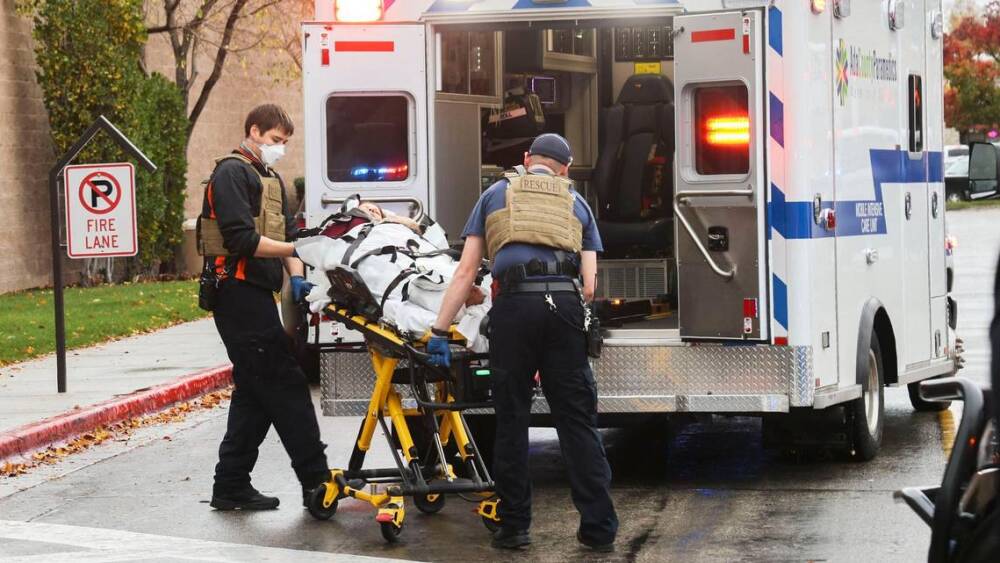By Nick Rosenberger
The Idaho Statesman
ADA COUNTY, Idaho — You’re not alone if you’ve been feeling growing pains in the Boise area.
The region could look, feel and even smell a little different as the smoke clears from the explosive growth the region saw during the COVID-19 pandemic. Though the pace has slowed, the regional growth spurt has left scars and questions over how to adapt.
This is particularly true for how Ada and Canyon counties respond to emergencies. Annual call volume for Ada County Paramedics has increased by 10,000 since 2020, according to Chief Paramedic Shawn Rayne, yet the organization hasn’t had the funds to add a single paramedic or EMT to its roster.
“You think about how much growth has occurred since 2020, and we still have the same number of people, the same number of ambulances,” Rayne said by phone.
Idaho’s emergency services, such as fire districts, have recently tried to boost their finances and address the strain by taking advantage of a last-minute bill that Gov. Brad Little signed into law in April.
That bill, House Bill 436, gives a pathway for emergency services to withdraw from urban renewal agencies, which skim new revenue from rising property values and new development and uses that money to help fund more projects. That means the tax revenue for emergency services stays the same for the life of the district, which is often 20 years.
Emergency services across Canyon and Ada counties have filled urban renewal agency agendas for weeks with requests to withdraw. All requests have been denied as the bill only allows fire and ambulance services to leave if they have no existing debt or financial obligations to the urban renewal agency.
According to the general counsel for the Eagle Urban Renewal Agency and the Capital City Development Corp., Boise’s urban renewal agency, the bill was broad and gave little guidance.
Ada County Paramedics had outstanding obligations to four out of CCDC’s five districts, said Meghan Conrad, outside counsel for CCDC with Boise’s Elam and Burke law firm, during a board meeting on Monday. The service had no such contractual obligations to one district, but the CCDC board denied the withdrawal request anyway because the commissioners said that funding from EMS that went to administrative costs for the urban renewal agency counted as a financial obligation.
Ada County Paramedics loses about $307,000 to the county’s urban renewal districts, with the largest share going to CCDC at about $159,000, Rayne said. The agency’s Gateway East district, which covers a mostly undeveloped area south of the Boise Airport, makes up the lion’s share of CCDC’s portion at about $72,000.
According to Rayne, the $307,000 would be enough to beef up staffing by about three or four paramedics or EMTs.
“We’re already underfunded as is,” he said. “Every little bit helps.”
However, Conrad said the $159,000 that goes to CCDC wouldn’t be the amount that Ada County Paramedics receives.
“This $159,000 would be a direct budget impact to CCDC annually,” Conrad said. “On the other side of the coin … that’s not a dollar-per-dollar grant to the EMS district. So if this district were to close tomorrow, EMS would not start receiving $159,000.”
Instead, there’s a different calculation that goes into the EMS district that drives its budget, Conrad said. The numbers Ada County provided to CCDC, she said, didn’t seem to include this calculation.
“It could be something less than 80%,” Conrad said.
Idaho’s complicated emergency puzzle
Funding for ambulance services is tricky.
According to Rayne, only about 30% of Ada County Paramedics funding comes from taxes, while most of the rest of the funding comes from insurance payments for expenses like transporting people by ambulance.
There’s a wrinkle in that funding formula: about 60% of their patients are on Medicare and Medicaid, which requires Ada County Paramedics to write off a sizable chunk of the cost.
High inflation has also put a dent in the service’s budget, Rayne said. A few years ago, an ambulance cost about $190,000. Today, that same ambulance costs about $360,000.
“It’s not simple like we raise our rates to account for our needs,” Rayne said.
Part of the difficulty, Rayne said, is how staffing for the service works. Personnel work several 24-hour shifts through the week then are off for four days — meaning the service generally needs to hire eight-person units at one time to fully staff an ambulance, rather than just adding one or two new employees here or there.
After several years, that time to bring on more units may be here.
On Monday, Rayne put forth a budget to the Ada County Board of Commissioners for $22.3 million to bring on five paramedics, seven EMTs and four advanced EMTs. The new personnel would staff a station near Owyhee High School in Meridian and run a new “intermediate life support response unit.”
“This is the first year that we’ve really been able to look at adding personnel,” Rayne said.
Even if Ada County grants that budget, Rayne said, the service would still lag behind the nationally recognized goal of responding to an emergency within 8 minutes and 59 seconds 90% of the time by almost 2½ minutes. To meet that goal, Ada County Paramedics would need another 24 employees.
©2025 The Idaho Statesman.
Visit idahostatesman.com.
Distributed by Tribune Content Agency, LLC.






